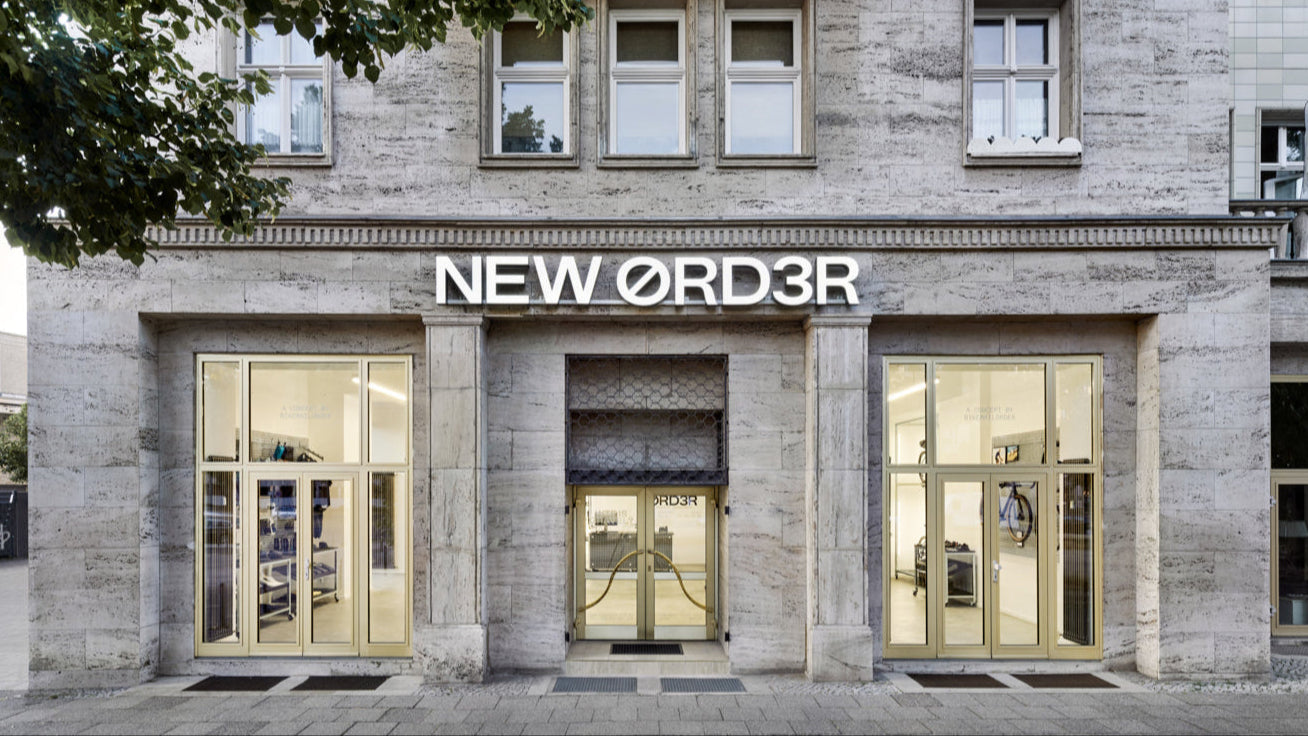For yogurt, the "best before date" makes sense. But for a bicycle helmet? At first glance, it seems rather nonsensical, doesn't it? But even a bicycle helmet has an expiration date. Or rather, a limited lifespan. Here you will learn why and when you should buy a new helmet!
After a few years, you should replace your bicycle helmet. The recommendation sounds like a money-making scheme. So is it just about profit when experts, cycling clubs, and manufacturers recommend replacing a bicycle helmet after a few years? Clear answer: No, definitely not.
Quick overview (the rules of thumb for durability)
- At the latest, you should replace a bicycle helmet every 5 years .
- After a fall , you should replace it immediately.
- If there are visible damages or a poor fit: replace!
A bicycle helmet protects your head — but it doesn't last forever
↪ Why is the lifespan limited?
Especially if you've invested in a good bicycle helmet that wasn't exactly cheap, you might be surprised at this point. Why should you replace it — for no apparent reason? You might not have used it often, and it looks like new — does that affect its lifespan?
➽ The helmet has a limited lifespan. The reason for this: material fatigue! And it doesn't matter whether you've worn the helmet often or if it's been sitting in the closet most of the time.
Not only wear and tear cause a bicycle helmet to age, the material simply changes over time. A bicycle helmet is mostly made of plastics. Foam, plastic, or padding age slowly, and when factors like heat, friction, or moisture are added, they age even faster. It becomes brittle, flat, or hardened and simply doesn't work properly anymore!
|
Even if you don't see any signs of aging on the helmet, it can happen that the material no longer functions properly. |
The 12 most important reasons to replace your bicycle helmet
Here you will find the most important signs in a handy list. This way you can quickly and easily find out if it's time for a new bicycle helmet!
1. The bicycle helmet is older than 5 years
Material fatigue due to UV radiation, heat, sweat, or wear reduces the protective effect. The general recommendation from manufacturers: At the latest, after five years, it's time to buy a new helmet.
2. After a fall
If you landed on the helmet, thank it — and buy a new one! Even a seemingly light impact can irreparably compress the EPS foam inside. There can also be invisible cracks that compromise safety. Whether visibly damaged or not — after a fall, the helmet is no longer reliable.
3. The helmet falls down
Even if your helmet falls to the ground from a certain height, the material can be damaged.
4. Cracks, dents, or soft spots in the EPS foam
The foam inside the helmet must not show any pressure points or hairline cracks, and it must not crumble away under any circumstances! Irregularities here mean a loss of damping ability — your helmet has reached the end of its lifespan and should be replaced immediately.
5. Damaged outer shell
Cracks, deeper scratches, or chipped spots on the outer shell are weak points. If the outer layer is damaged, it can no longer distribute impacts correctly. Even if the shells start to separate from each other, it's a sign for a new helmet.
6. The outer shell is no longer smooth
The outer layer of a bicycle helmet is smooth, and for good reason! If you land on the helmet, the head slides along the ground with as little resistance as possible. If the helmet were to catch on the surface, it could put additional strain on the neck. Therefore: Rough shell... new helmet!
7. The bicycle helmet was exposed to extreme temperatures
Prolonged heat (for example, in a car during summer) or extreme cold makes the EPS brittle, deformable, or causes the material to harden. After storing in heat or frost for a long time, you should critically check or replace the helmet.
8. Worn-out, flat pads
The inner pads also age, over time they lose the ability to regenerate when compressed. Sweat and frequent washing accelerate the process. If the pads are flat or no longer hold reliably, the helmet is simply too old.
9. Musty, greasy pads
The good news: You can wash the pads of most bicycle helmets (gentle cycle, laundry bag, follow manufacturer's instructions!). The bad news: Eventually, they still stink or the fabric is simply worn out. That's a sure sign that you should start looking for a new helmet.
10. Damaged buckles, mounts, or clips
Frayed straps, broken buckles, or loose clips can fail in the event of an impact. The helmet is only as secure as its fastening system.
11. The helmet no longer fits properly
If your helmet suddenly feels different, something is wrong! Maybe the retention system inside is at the end or the pads have lost their “bounce.” If the helmet no longer fits well on the head, it no longer fulfills its protective function properly.
12. The helmet is technically outdated
Older helmets often lag behind innovative safety systems. Impact-absorbing materials, patents like MIPS, one-handed closures, LED lighting, or better ventilation make new helmets safer. Also important: Just like bicycles, helmets are becoming lighter!

|
There are inner pads, clamps, or buckles as spare parts. But it is worth considering thoroughly whether the helmet has reached the end of its lifespan – for your safety! |
FAQs
How long does a bicycle helmet last?
The answer to the most important question: What is the lifespan of a bicycle helmet? The manufacturer's recommendation is: approx. 3–5 years, depending on usage, storage, and stress. With intensive use or extreme UV/heat exposure, you should replace it sooner.
How old is your helmet?
This is not about the duration of use, meaning how many years you have been using the helmet. What matters for the lifespan is the actual age of your bicycle helmet. The production date is often embossed in the helmet or on a small sticker. A look at the user manual can also help, or you can inquire with the manufacturer if necessary.
Can you buy "durable" bicycle helmets anywhere?
Yes, there are durable helmets and those that age quite quickly. If you buy a helmet from a good manufacturer, it will last longer, while cheap helmets have straps that come loose faster, clamps break, and so on. However, even the most expensive bicycle helmet has a limited lifespan!
Can you extend the lifespan of your helmet?
Here are a few tips to ensure that your helmet can be used for as long as possible.
- Do not store it permanently in the car or in direct sunlight.
- Prolonged frost is also not good for the helmet.
- The helmet should not be stored damp for long periods (for example, on the handlebar with the bike in the garage).
- Ventilate after riding and wash pads regularly (follow manufacturer's instructions).
- Use only lukewarm water and mild detergent — solvents are a no-go.
- Document signs of wear and check/replace the helmet immediately after falls.
Do I really need to replace the helmet after every fall?
Yes. Minor damage to the EPS foam is often invisible. The only safe rule: Replace the helmet after an impact or fall.
Can a helmet be repaired?
Small pad or strap repairs are possible; structural damage to the shell or EPS is irreparable — in this case, you should always replace the helmet.
How can I detect invisible damage?
- Look closely, but fine cracks or aging material are unfortunately not visible.
- Do the head feel test: Does the helmet still fit as usual/comfortably?
- Check the interior – are there soft or hardened spots?
- If in doubt: Better replace the helmet or have it checked by a specialist dealer.
Can I still wear the helmet?
Something seems odd about your bicycle helmet, it has reached the end of its lifespan, or it has fallen. Can you still wear it? You definitely should! Order or buy a new one immediately, but until you have one, you shouldn't ride without a helmet!
Advocacy for bicycle helmets
Do only bicycle helmets have a limited lifespan?
No, all helmets are eventually "worn out". Ski helmets, climbing helmets, or motorcycle helmets (probably also construction helmets) need to be replaced eventually.
Our conclusion:
Even if it doesn't (like yogurt 🙂) mold… replace your bicycle helmet in a timely manner, as it has a limited lifespan. Every 5 years at the latest you should replace it, always after falls and there is a need for action in case of visible damage. A well-maintained, up-to-date helmet increases your safety and also comfort on every ride.
Act now: If any of the above points apply to your helmet, now is the right time for an upgrade. Check out our helmet category — we have a selection of modern, tested models (also with MIPS) for city, road bike, gravel, and MTB.
Buy bicycle helmets in the BMO online shop
MTB Helmets | Gravel Helmets | Road Bike Helmets | Trekking & City Helmets | MIPS Helmets | BMX
Bicycle helmets for the whole family
Women's Bicycle Helmets ♀️| Men's Helmets ♂️| Children's Bicycle Helmets 👶
Cover image: Pavel Danilyuk on Pexels





